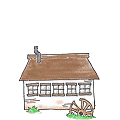posted 1 year ago
ChatGPT AI on prostrate lupins for usda zones 4-6 and 1-1.5 m precip/year:
"1. Lupinus nanus (Sky Lupine): A low-growing, prostrate species native to California, it spreads along the ground and reaches only about 6-18 inches in height. This species typically thrives in open, sunny areas and blooms with blue and purple flowers.
USDA Zones: 4-6
Height: 6-18 inches (prostrate to low-growing)
Precipitation: Thrives in areas with moderate rainfall and good drainage.
Habitat: Common in open, sunny meadows and grasslands.
2. Lupinus perennis (Wild Lupine)
Lupinus perennis ssp. perennis var. occidentalis, commonly referred to as the Western Wild Lupine, typically grows to a height of around 12-24 inches (30-60 cm). It is considered a low-growing or spreading form of lupine, with a sprawling habit compared to its upright relatives.
This variety thrives in sandy or well-drained soils and is commonly found in dry, open areas, including meadows, prairies, and sandy soils near coasts. Its height can vary depending on growing conditions, but it generally stays relatively short compared to other lupine species.
USDA Zones: 3-7
Height: 12-24 inches (prostrate or sprawling in some varieties, like var. occidentalis)
Precipitation: Tolerates moderate rainfall, especially in sandy or well-drained soils.
Habitat: Prefers dry, sandy soils, often in open woodlands and prairies.
Lupinus argenteus (Silvery Lupine)
USDA Zones: 4-7
Height: 6-24 inches (can have a prostrate form depending on environmental conditions)
Precipitation: Tolerates 1-1.5 meters of precipitation, often found in subalpine and mountainous regions.
Habitat: Rocky soils and open slopes.
4. Lupinus arcticus (Arctic Lupine)
USDA Zones: 2-6
Height: 6-18 inches (can grow prostrate in harsh environments)
Precipitation: Adapted to areas with variable moisture, including higher precipitation zones.
Habitat: Subalpine, tundra, and boreal forests.
5. Lupinus lepidus (Prairie Lupine)
USDA Zones: 4-7
Height: 4-16 inches (prostrate and mat-forming in some conditions)
Precipitation: Thrives in dry to moderately moist soils, often found in meadows and open forests.
Habitat: Tolerant of poor soils and rocky outcrops.
These species tend to thrive in cooler climates and areas with moderate precipitation, making them good candidates for USDA zones 4-6 with the specified precipitation range. You might find certain regional or subspecies variations that further suit specific local conditions.
Lupinus polyphyllus (Bigleaf Lupine)
USDA Zones: 4-7
Height: While this species typically grows taller, some varieties or environmental conditions can lead to lower, more sprawling growth.
Precipitation: Tolerant of higher moisture, commonly found in moist meadows and along stream banks.
Habitat: Prefers moist, well-drained soils but can adapt to various conditions.
7. Lupinus nootkatensis (Nootka Lupine)
USDA Zones: 4-6
Height: Can grow from 12-24 inches with a sprawling form in tough environments.
Precipitation: Common in areas with high rainfall, including coastal regions.
Habitat: Found in moist soils, often near water sources, but can tolerate poor soil conditions.
8. Lupinus breweri (Brewer's Lupine)
USDA Zones: 4-6
Height: 4-10 inches (very low-growing, mat-forming lupine)
Precipitation: Adapted to moderately moist to dry conditions.
Habitat: Common in rocky or sandy soils in alpine and subalpine meadows.
9. Lupinus albifrons (Silver Bush Lupine)
USDA Zones: 4-7
Height: Typically low-growing and spreading, around 12-24 inches.
Precipitation: Well-suited to moderate rainfall but prefers well-drained soils.
Habitat: Found in dry, open habitats but can tolerate seasonal moisture.
These species have a range of adaptations for both precipitation and USDA zone tolerance, making them suitable for landscapes that experience cool to moderate climates with decent rainfall. Adaptation can vary within these species depending on local conditions and specific subspecies. For best results, it's a good idea to test local strains or check with native plant nurseries to ensure the right fit."






